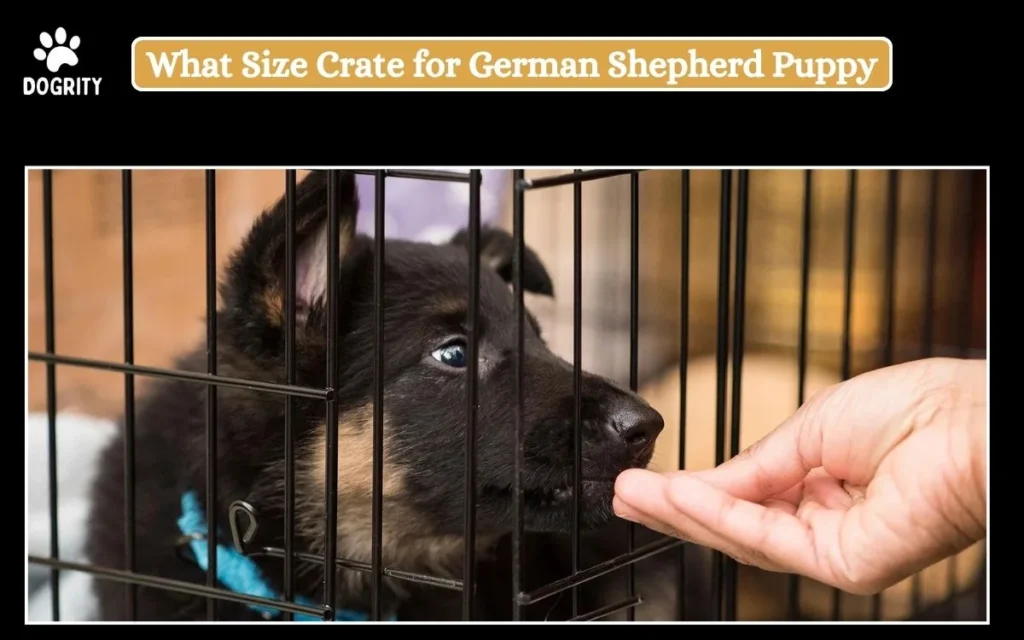Crate Selection: The Basics
Choosing the right crate is important when choosing one German Shepherd puppy. I recommend starting with a 48″ or XXL crate. With the addition of a divider, you can change this size to better suit your growing puppy’s needs. A 36″ crate is a good choice for safe and flexible car transport. For crates, Vebo Dog Supply offers outstanding quality and value. A heavy-duty crate might be the better choice if you need something more strong, particularly if your dog likes getting out. To choose the right size for your dog, i personally recommend XL for female dogs and XXL for male dogs.
Why It’s Important to Crate Train
Your dog’s good health depends on the crate training you give your dog. Your puppy can relax and feel safe in a crate because it provides a calm and secure area. Proper crate training can stop unwanted behaviors and overload that result from lack of sleep.
Also, creating a routine in a crate can help you improve your daily tasks and ease your puppy’s transfer to a new home. Those Puppies who have never been left alone may at first react to the crate. Put their food inside the crate before they enter to in crate help it become a good space. In the end, this promotes a positive relationship with the crate. To stop them from developing a routine of seeking attention, wait for stillness before allowing them out to avoid crying or screaming.
Benefits of Crate Training
- Safe Secure Place: Gives your dog a comfortable and secure crate.
- Less Stress: Stops harmful behavior and reduces stress related to providing care.
- Prevents Accidents: Lowers the likelihood of risky actions such as chewing electrical wires.
- Helps in House Training: As dogs avoid soiled pillows, this aids with toilet training.
- Safe Travel: Allows safe car driving without requiring uncomfortable applications.
- Convenience: Improves holidays, trips, and training.
- Long-Term Benefits: Promotes a calm, lasting bond with your dog.
Getting Started with Crate Training
Crate training your dog successfully involves more than just putting them in the crate and hoping for the best. Start by putting the crate in the middle of the room where your puppy may still communicate with family members and feel at ease. Avoid putting the boxes in busy places or allowing kids to play around them.
Keep the door open to promote a positive connection with the crate and:
- Feeding Your Dog in Its Crate: This creates a good relationship with the area.
- Adding Chew Toys: Use toys or KONGs packed with food to give the crate an easy look.
- Giving Thanks: Reward your dog with a goodie when they lie down or enter the crate.
Until your dog relaxes in and feels comfortable, first leave the crate door open. Start slowly closing the door for a short period while satisfying calm and ignoring cries or clawing.
Improve the time your dog spends inside the crate with the door closed as they get more used to it. The bowl should never be used as a tool for punishment. Use it as a peaceful, comforting area instead, and give a signal or instruction to enter the crate, such as “bed” or “crate.” To help with training and control, make sure your dog only comes out of the crate when allowed or told to do so.
Conclusion
Choosing the right crate size and type for your German Shepherd puppy is essential for their comfort and training success. Whether you start with a 36” crate for car travel or invest in a larger crate with a divider, ensuring the crate fits your dog’s needs is crucial. Effective crate training will provide a secure and enjoyable environment for your puppy, fostering a positive experience that benefits both you and your dog in the long run.







